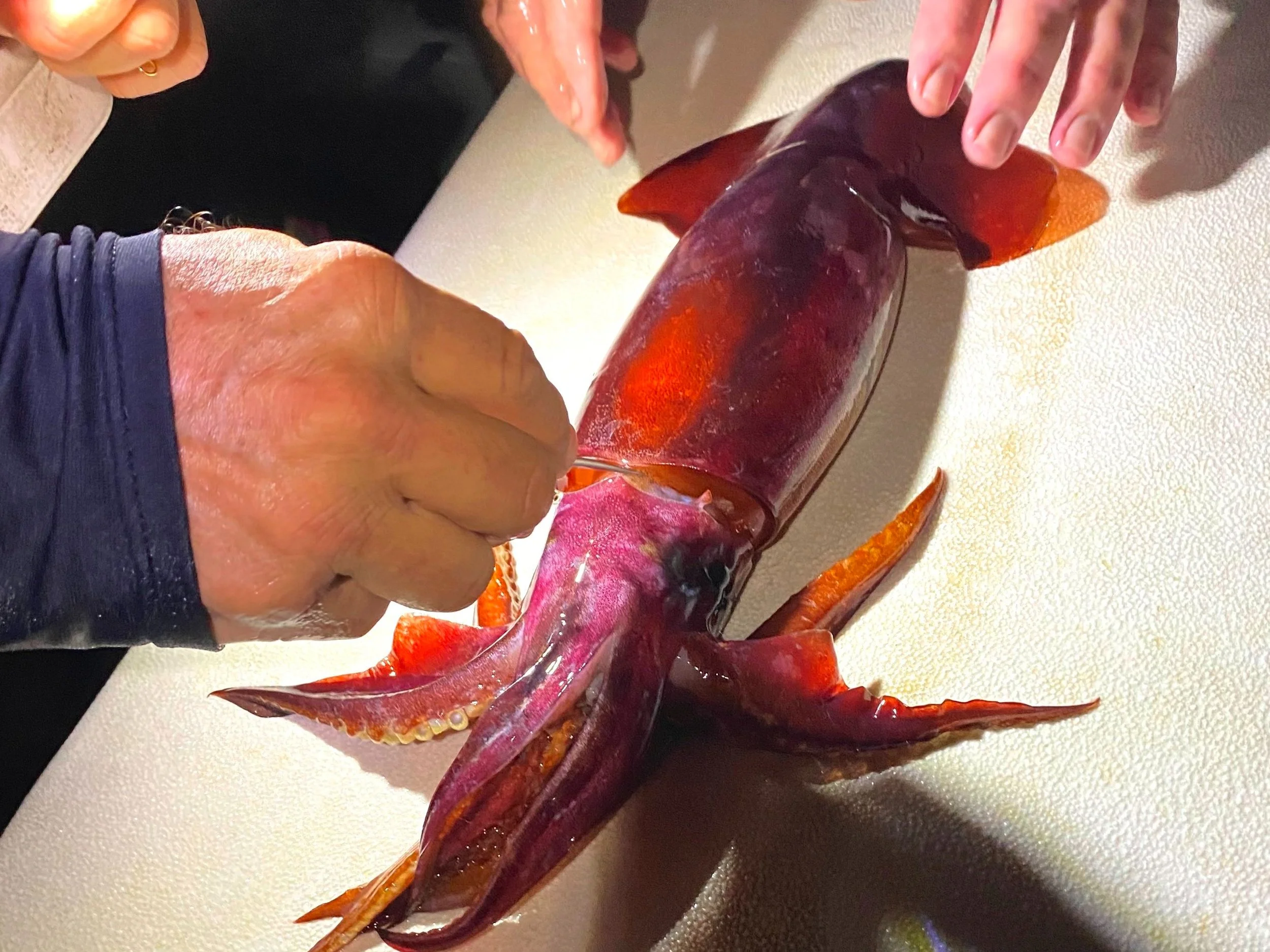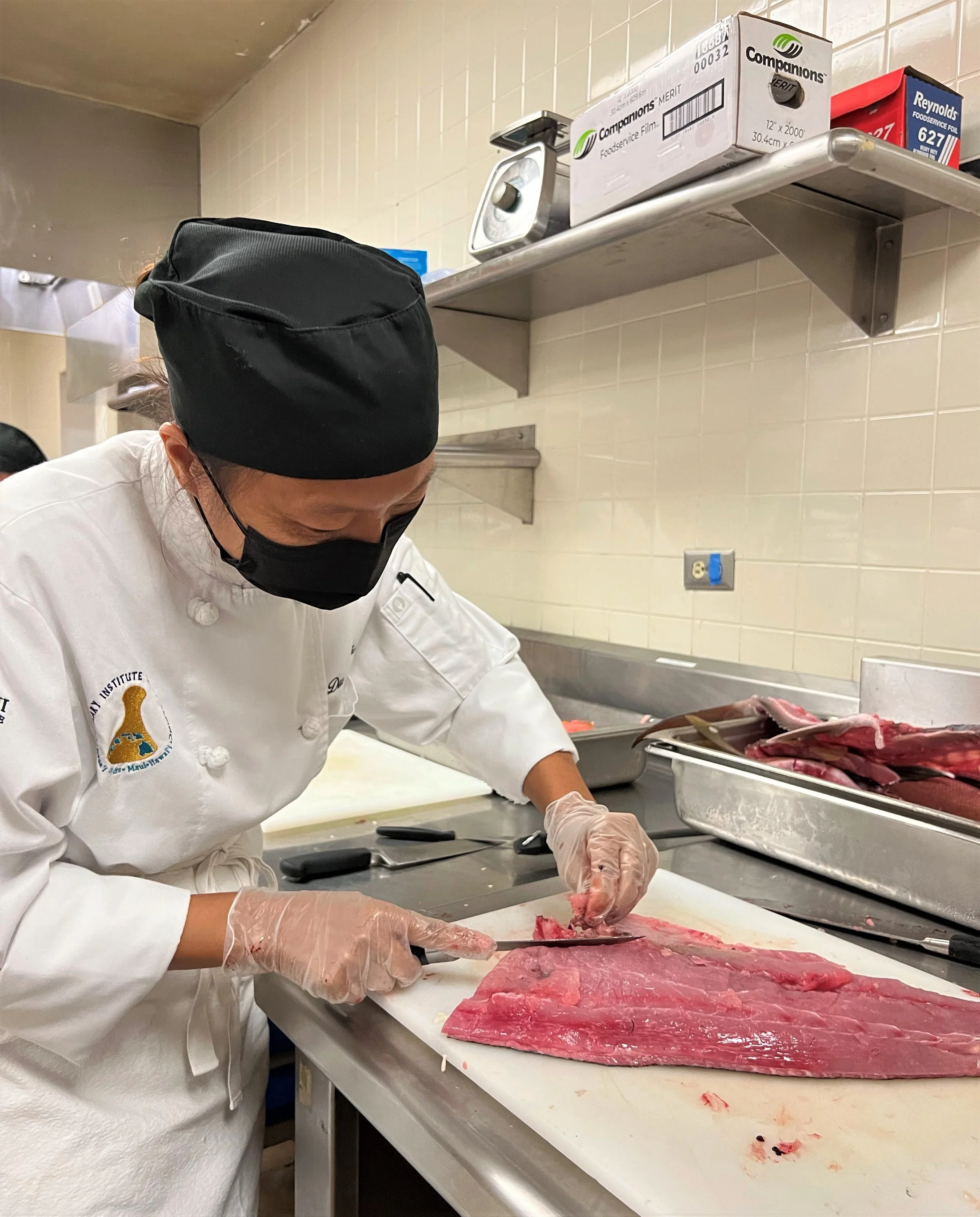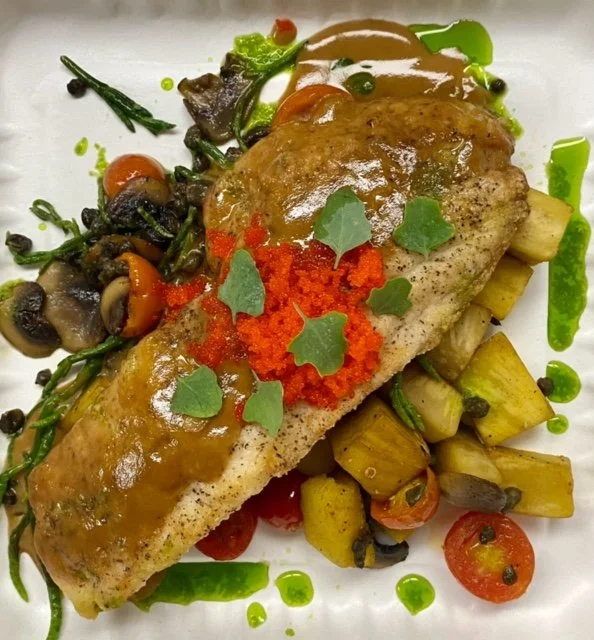Promoting Hawai’i Seafood
High School and College Culinary Project
Fresh Local Fish for High School & College Culinary Programs (2023 - 2025)
Recognizing the need for increased access of Hawaii’s culinary programs to fresh local sourced seafood products, PIFG’s project focuses on increasing capacity of High School and College Culinary programs through the collaboration with wholesale distributors of fresh pelagic fish, college culinary arts chefs, and high school culinary arts instructors. Together, the group sources, purchases, and distributes fresh pelagic fish to participating college and high school culinary arts instructors, providing hands-on opportunities for students to engage with sustainability-themed curriculum. Project objectives include providing students and instructors access to fresh local fish, educational materials on Hawaii's fish species and industries, and fostering networks between culinary educators, the fishing community, and the seafood industry. Project outcomes will benefit the fishing community by enhancing established seafood distribution networks, integrating fresh local fish into culinary arts programs, and educating future chefs and food service workers about Hawaii's local fish species and sustainable practices. This initiative supports the local fishing community, seafood industry, and Hawaii's food service sector, while preparing students for successful culinary careers with knowledge of the local fish industry.
Kauai Ahi Diversification
Identifying community ideas and prospects to diversify and promote fresh ’ahi, yellowfin tuna, landed by the Kaua`i small boat fishery (2020 - 2022)
Yellowfin tuna, ‘ahi, is a key species in the Hawaiian diet, the local economy, and visitor culinary experience. ‘Ahi (Thunnus albacares) is being fished sustainably, and the high local availability of juvenile and adult fish supports hand line fisheries in the MHI. Each island’s ‘ahi fisheries are unique and has different features. Kaua`i is dominated by part-time anglers, most of them trollers, whose catch generally supplies the local Kaua`i market. While working together with Kaua`i fishermen on co-operative ’ahi and bottom fish tagging and surveys over the years, and being part of this community, we learned about the unique aspects of the local fishery. This included both advantages and problems Kaua`i fishermen experience in their efforts to provide fresh seafood for residents and visitors. The objective of this proposed work is to identify and evaluate a range of possible approaches to diversify or increase market share and business opportunities for the Kaua`i small boat `ahi (and other species) fleet, and the community’s goals and preferences related to diversification. Link to Ahi Hub Kaua`i website: Link
Honolulu Fish Mongers
Tracing the Tracks of Hawaii’s Early Fish Mongers (2018-2019)
The history of Hawaii’s early fishing and seafood development is captured in a summary brochure. The evolution of fishing and marketing of Hawaii fish is highlighted from the early Hawaiian fisheries and production from fish ponds to the introduction of new fishing boats, gear and methods targeting offshore reef fish, bottomfish and pelagic species. Nothing influenced this transition more than the introduction of the motorized Sampan fishing vessels from Japan. Click the link to download the brochure summarizing the history of Hawaii’s early fishmongers. Link to Honolulu Fish Monger’s Brochure: Link.
Mercury in seafood has been a serious issue raised regarding the seafood safety. Important factor in determining the potential harmful effects of mercury is the level of selenium that is also present in the fish. The element, Selenium, binds to mercury making hit harmless when consumed. See table from the Western Pacific Fishery Council below. Selenium in Ocean Fish protects Against Mercury: Link.
Supporting the Community through Covid-19 and Beyond
Supporting the community through the Deep-7 Bottomfish surveys
Inspired by the ethos of aloha and guided by Lawai’a, PIFG has gone above and beyond in its cooperative fisheries project to make a significant contribution to the wider community. This endeavor has been shaped by the challenges posed by the COVID-19 pandemic and a steadfast commitment to supporting those in need. During the pandemic, PIFG held a contract with the National Marine Fisheries Service Pacific Islands Fisheries Science Center (PIFSC) for the Cooperative Fisheries Independent Bottomfish Survey (BFISH) in the Main Hawaiian Islands (MHI), allowing PIFG and its contracted vessels to carry out research despite the pandemic's restrictions. This distinguished PIFG as one of the few NOAA at-sea research projects operating under stringent COVID-19 protocols. Since 2009, the BFISH survey has generated Deep-7 bottomfish bio-samples primarily intended for the PIFSC life history program, with surplus samples being redirected to support Loko Ea’s initiative to provide sustenance for the elderly and the needy in 2018. As the pandemic hindered PIFSC's processing of BFISH bio-samples, PIFG seized the opportunity to extend its support to Touch of Heart—a program not only dedicated to providing meals to those in need but also to transforming lives by empowering individuals facing employment challenges. Touch of Heart's vocational training offers holistic growth in a nurturing environment, fostering self-sufficiency and recognizing the value of each participant. Backed by a 100% food safety certification and boasting a remarkable 95% long-term employment rate for its 130 graduates, Touch of Heart embodies a profound commitment to sustainable change.













